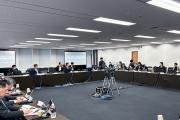Novartis Pharma said on September 12 that it has received approval for a new 300 mg pen formulation of its psoriasis treatment Cosentyx (secukinumab) in Japan. The drug is already available in 75 mg syringe and 150 mg pen forms.…
To read the full story
Related Article
- Novartis Rolls Out Cosentyx 300 mg Pen in Japan
December 1, 2022
BUSINESS
- Cyto-Facto Expands CPC Footprint to Win Multiple Cell Therapy Contracts
December 24, 2025
- Shionogi, Salubritas Tie Up on Hair Cell Regeneration R&D for Hearing Loss
December 24, 2025
- Guardant360 Approved in Japan as CDx for Lilly’s Inluriyo
December 24, 2025
- Meiji Pharma Sets Up Singapore Unit to Bolster ASEAN Push
December 24, 2025
- Santen Releases VKC Eye Drop Verkazia in China
December 24, 2025
Let’s ditch the stuffy jargon and talk about AI in HR like real humans.One of the biggest myths floating around is that AI is coming to steal our jobs. Newsflash: that’s not happening. Sure, AI can handle the boring stuff…











